- Homepage
- News and Features
- Working with the experts behind the ropes at The Open
Working with the experts behind the ropes at The Open
Darren McLaughlan, the course manager at North Berwick, and Sam Sweetzer, deputy course manager at The Buckinghamshire, joined the R&A’s agronomy team of Alistair Beggs, Richard Windows and Adam Newton at Royal St George’s for two weeks at the 149th Open.
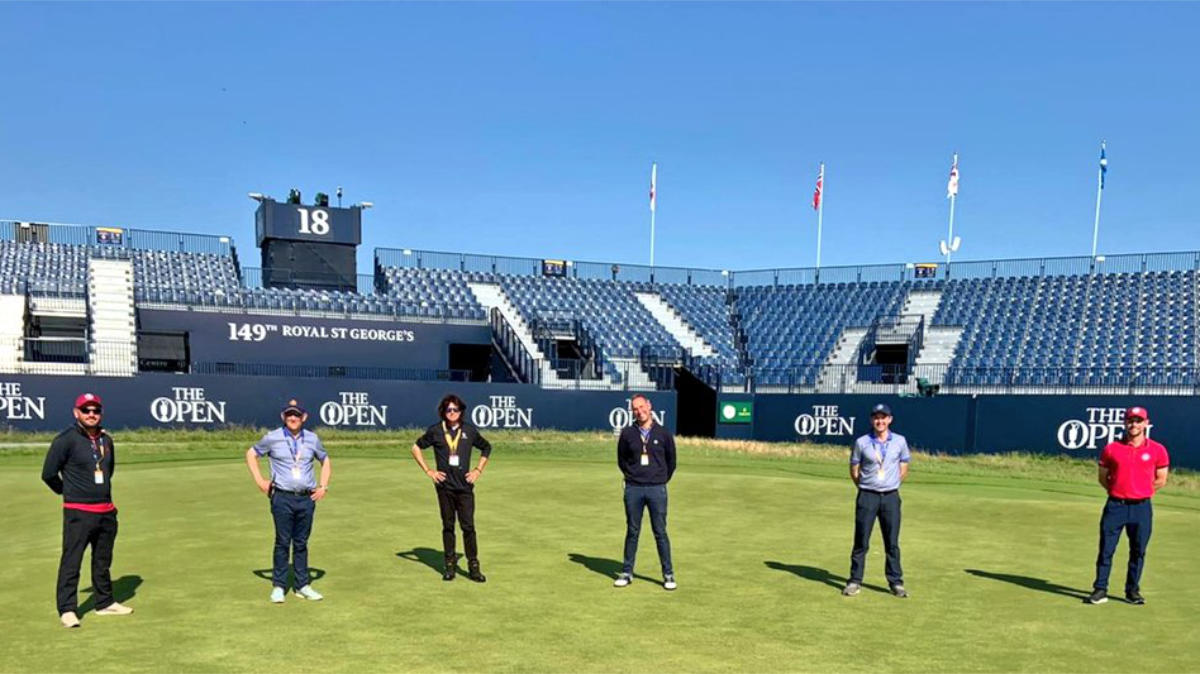
Darren and Sam were tasked with the performance testing of 20,000 data collection points around the course. Sam tested the firmness of all greens and selected approaches and fairways, while Darren monitored volumetric water content with the POGO moisture meter. The data was then analysed by the agronomy team, with maintenance of the course adjusted to ensure optimal playing conditions.
The Clegg Impact Hammer: What is it and what does it do?
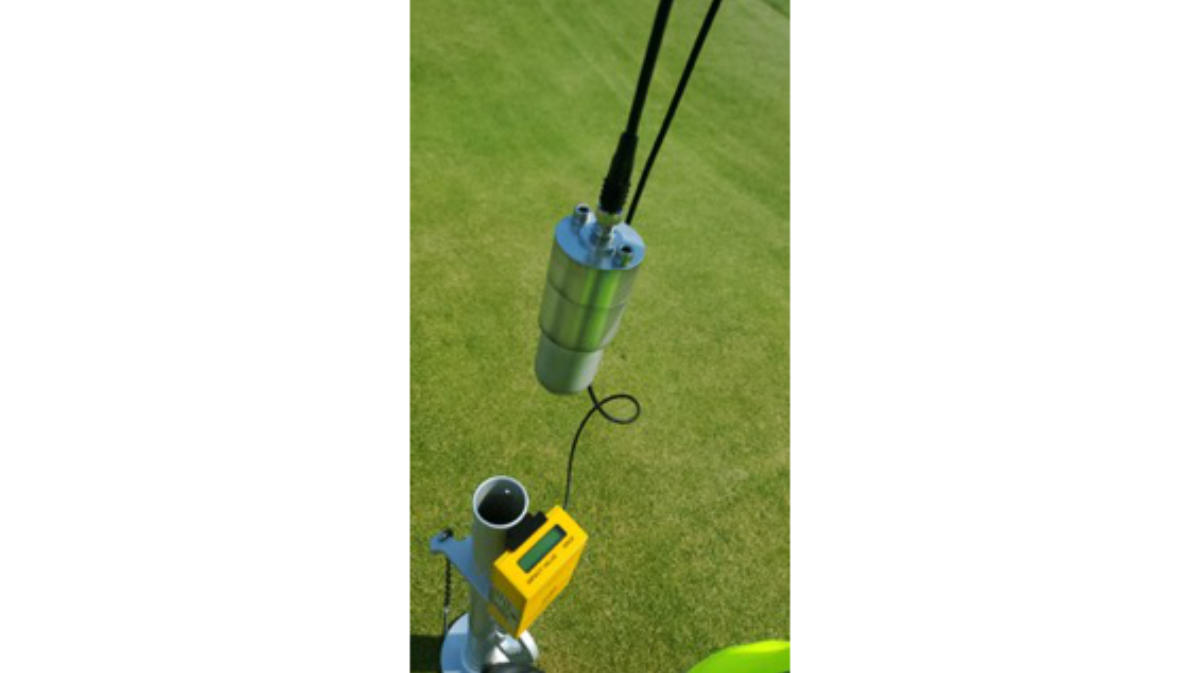
Some of you may use the Clegg Impact Hammer on a daily basis, while others may not have used one at all. The hammer measures the firmness and shock absorption properties of surfaces, most commonly golf greens. This data can then be used to adjust maintenance practices to meet playability and plant health needs. Firmness values are measured in units of gravities (G) and the higher the reading, the firmer the surface.
For links golf, optimum firmness would be 100 to 130G, promoting more traditional ‘bump and run’ shots and reducing ‘target golf’. Parkland‑style golf courses should aim for 80 to 100G. Royal St George’s aimed to get as close to 130G as possible as the tournament progressed.
Fifteen readings were recorded on every green during the morning and, where appropriate, in the evening. Naturally this will correlate with all sorts of variables, including moisture content, organic matter levels and traffic from machinery and footfall. The data is vital to enable micromanagement of each green, creating the most consistent playing surfaces across all greens. A selection of approaches and fairways were also measured with the aim of keeping these as firm, if not firmer, than the greens. Nobody wants soft approaches for the bump and runs!
Moisture management with the POGO
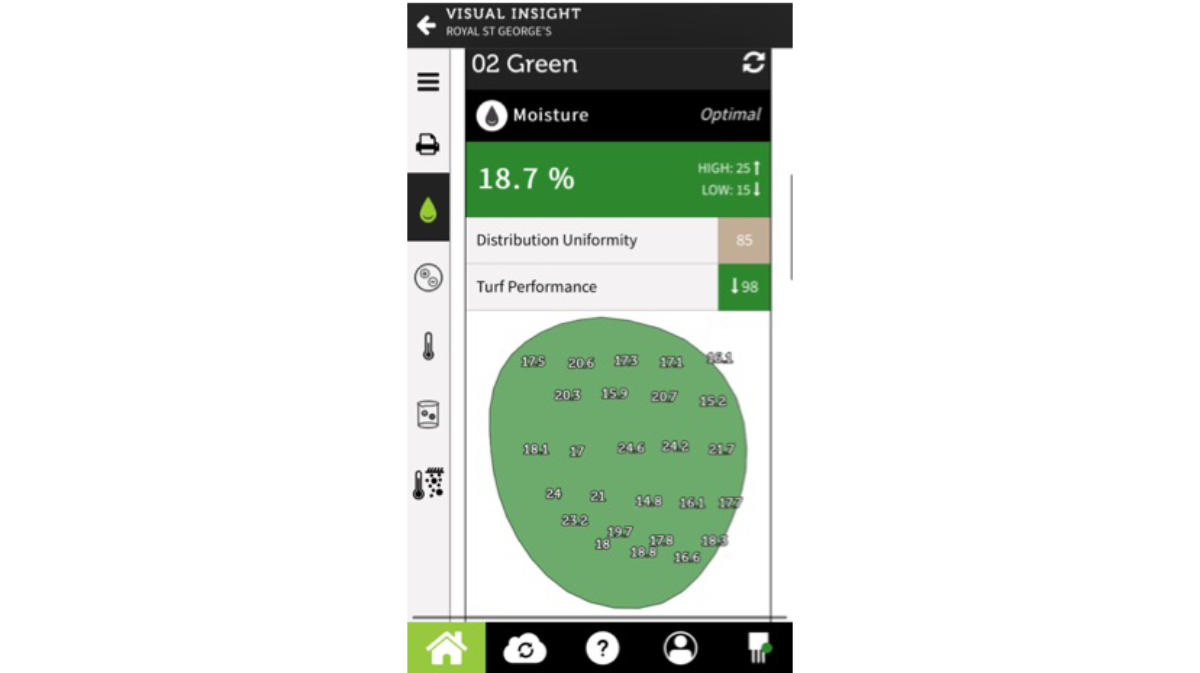
As greenkeepers, we all strive to produce consistent playing conditions week‑to‑week, day‑to‑day, from first tee until last. Moisture management is a huge part of producing consistent surfaces and this parameter was closely monitored with the POGO moisture meter in the lead‑up to and during the championship.
Of course, there are times when Mother Nature intervenes and with around 27mm of rain during the practice day, this exercise became a little different to what we would have expected coming to the driest venue on The Open circuit. Despite the rainfall, the numbers were uniform and relatively low, displaying good infiltration rates through the profile.
Generally, the higher the volumetric water content (VWC), the lower the gravity readings on the Clegg Hammer. In extreme conditions this causes the playing surface to become soft. While soft conditions are not something we would generally associate with links golf, the data collected during the tournament is testament to the hard work carried out by the greenstaff at Royal St George’s.
Cultural practices such as regular topdressing have lowered surface organic matter in the top 20mm to 4%, resulting in the firm playing conditions we all identify with on the links.
Fortunately the weather stayed warm and dry throughout championship weekend. The greens were dried down gradually, with only the need for the hand hose on selected localised spots. We were confident this would give the desired firmness of 120 to 130G consistently across all greens.
The Stimp Meter and wind tunnel
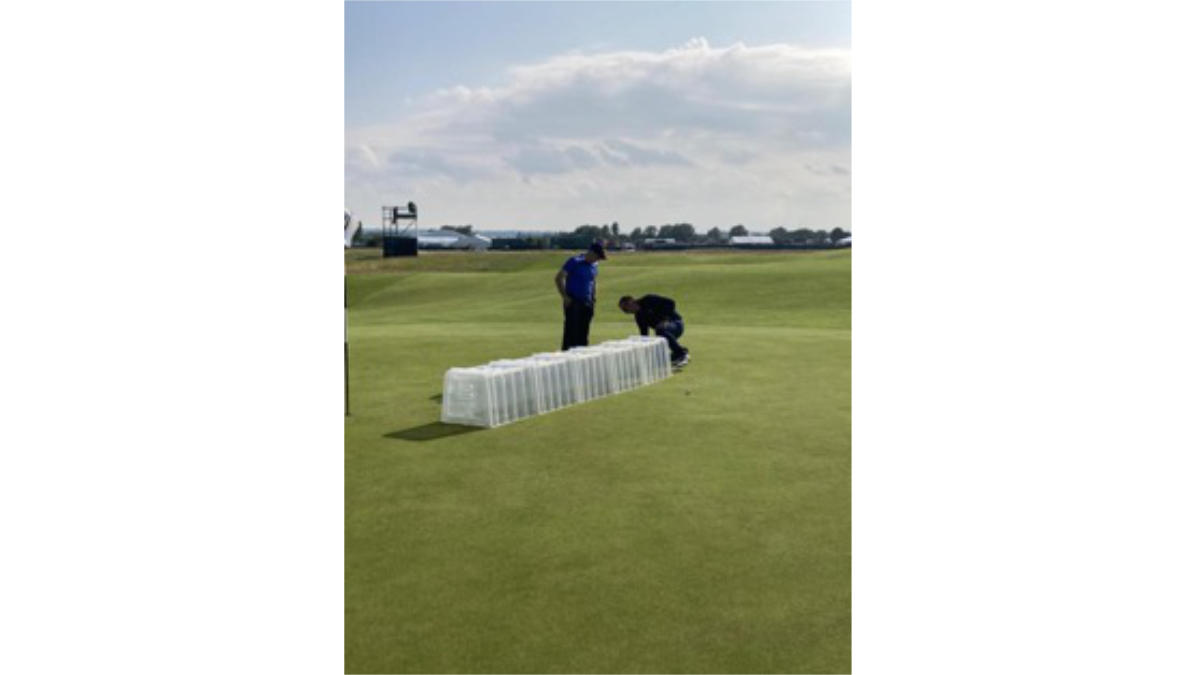
Stimping is the final procedure of performance data collection. It is essential that all greens are as consistent as possible. To achieve uniformity, each morning every green was stimped from the same location following each cut to determine if a second or a potential third cut was necessary to reach the speeds required. Multiple cuts were used, as opposed to rolling, as this gives a little more control over speed increases. Cutting heights may be adjusted, but from a plant health perspective, the higher we can keep it while not compromising performance means a larger leaf surface area to absorb light energy for photosynthesis.
The agronomy team stimped using a wind tunnel, which protected the reading from the elements and ruled out any other variables. Like most links venues, the botanical composition of Royal St George’s’ greens lend themselves to consistent speeds throughout the day with slow-growing fine grass types, predominantly fescue.
On a links it can be hard to find flat areas of greens to stimp on. In this case the Brede Equation is used:
S = 1ab/(a+b)
In this equation S = green speed, a = ball roll distance uphill and b = ball roll distance downhill.
This equation eliminates the effect of any slope, no matter how severe, producing an accurate depiction of speed.
Over the course of a morning set up, over 300 balls were rolled to help inform the practices carried out that create the uniformity across all greens. Thousands of balls are rolled over the course of the tournament and this is key to the decision‑making process!
Sustainable Royal St George’s
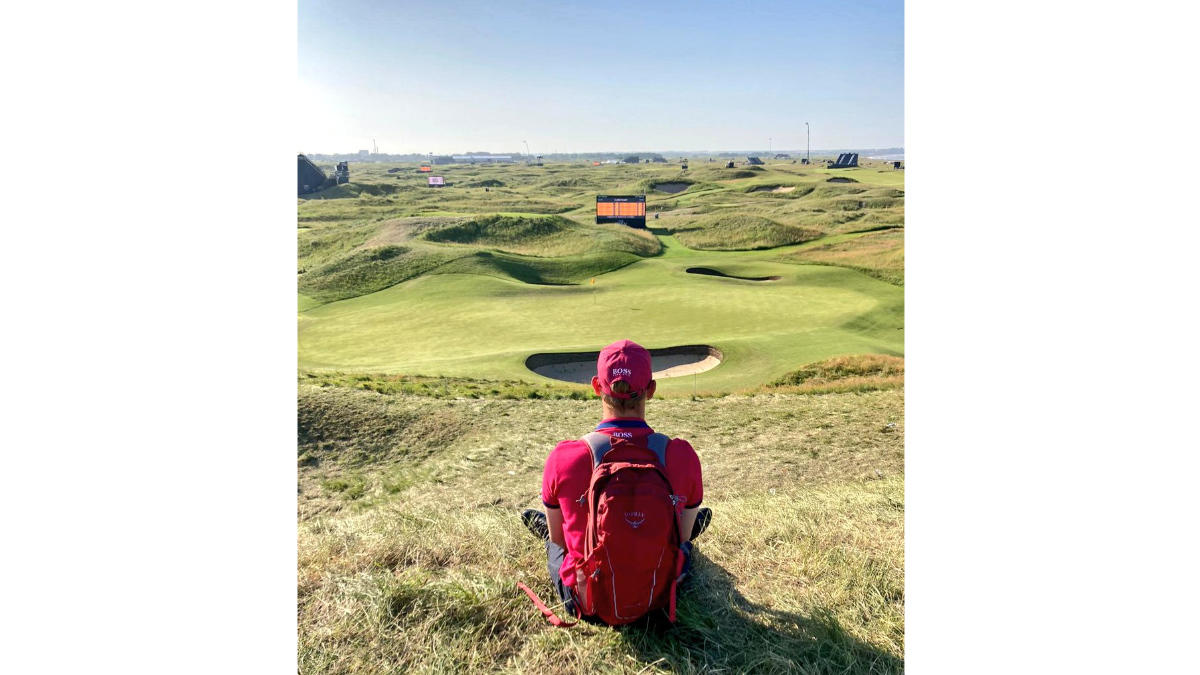
For those of you who have followed Head Greenkeeper Paul Larsen on social media » over the past few years, you may have read the extraordinary effort by himself and the team to reintroduce indigenous fine grasses and wildflowers across the huge 490‑acre site. This began in earnest after the 2011 Open, when patches of Yorkshire Fog on greens were targeted due to the weed grass affecting where the team would ideally like to place certain pin positions. This resulted in playing surfaces that are dominant in native fescue and complimented by bentgrass, in keeping with the sustainable approach to turf management.
The sweeping ecology plan did not end at the main in‑play areas. A grassland management plan has seen the introduction of an amazing array of wildflowers in secondary rough and carries. Rare species, such as the lizard orchid and quaking grass, can be found among other species such as sweet vernal grass, Timothy, yellow rattle and wild garlic.
Teamwork
Volunteering at St George’s gave us the opportunity to learn first‑hand from experts who have vast experience from multiple championships. Alistair, Richard and Adam have provided agronomy advice to The Open Championship for many years and have seen it all.
The R&A agronomy team has been carrying out data collection since 2010 to enable them to make better‑informed decisions during the course of the championship. What impressed us most about the team is that the numbers are only used to back up their instinct and judgement; there is no substitute for experience or ‘touch and feel’. The combination of this data, mixed with boots on the ground and walking the site – something we did plenty of during the championship – allows for the most informed decision making.
The agronomy team has a perfect balance of experience, instinct and data‑driven decision making. This was reflected in the condition of the golf course throughout, with surfaces peaking at the right time in the lead up to the championship.
Witnessing the chemistry between The R&A championship team and the Royal St George’s greenstaff was fascinating. Who would have the final say? Would Paul and his team be put out by the arrival of the agronomists on site? This was very quickly put to bed as it was clear from the outset that a professional mutual respect existed and that everyone had a part to play in the decision‑making process.
The fortnight at The Open was among the most interesting and educational weeks for us in our careers so far. Ideas shared, new practices learned, friendships formed that will last a lifetime. We would like to thank everyone involved at The R&A and it was a pleasure to be a part of such a professional operation. Paul Larsen made us feel very welcome and had time for us whenever we had questions. We urge all those studying with Myerscough College or SRUC Elmwood to apply for The R&A Scholarship and take advantage of the incredible opportunities it presents.
Continue the conversation
Darren McLaughlan is on Twitter at @golfcoursemana1 and Sam Sweetzer can be found at @SamSweetzer
Tags
Author

Karl Hansell
Karl has been head of communications for BIGGA since March 2016. His duties include editing the monthly Greenkeeper International magazine, in addition to other communications activities for the association.
